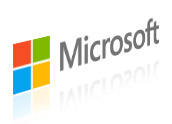
So far, Satya Nadella’s moves as head of Microsoft echo the teachings of Jim Collins’ 2001 best seller, Good to Great. It’s a book about how and why some companies wallow in mediocrity and others operate at several levels of magnitude higher than their peers — think Apple for one and Salesforce for another.
Nadella has done a good job of articulating a vision for Microsoft — a Collins fundamental — and now he’s on to getting the right people on the bus and getting the wrong ones off. By “wrong,” I should be clear that wrong isn’t bad — it’s just not in the direction of the future.
A clear example is hardware. Microsoft added 25,000 people when it acquired Nokia and about 12,500 of the announced layoffs are scheduled to come from that workforce. They are good people, mostly, who make things that under Nadella, Microsoft would prefer not to make — though Steve Ballmer thought otherwise.
To be fair to both people, there are a lot of things that Nokia had to do as an independent company that now can be rolled into Microsoft’s operations. Acquisitions always find these kinds of economies.
In this process, Nadella is articulating his vision more deeply because his actions are telling everyone this is what we do well and what we need to do more of. This is our future.
The IoT Opportunity
At the same time, Nadella perhaps is confronting some brutal truths — for instance, that Microsoft will not unseat either Apple or Google in the device and probably tablet arenas. Google’s Android OS is ubiquitous and free — not simply cheap — so it’s hard to compete.
Also, vendors of devices that use Android are selling at cost (of the hardware, that is) so it’s easy to see that if you want to make a lot of money in devices, you should stay out of the way and count the money you didn’t waste.
Next steps in this rolling reorg should be hiring and expansion in the areas where Microsoft can compete strongly. That should mean cloud computing in all its forms and possibly some really focused vertical market strategy for the Surface.
Microsoft has some great technology and patents in Surface, as well as in sensor technologies. You don’t play three-dimensionally exacting games like golf on Xbox without some dandy sensing technology, and that same stuff should find its way into myriad small devices that compete in the IoT bubble that’s rapidly ramping up.
If I had to guess, I’d say that Microsoft’s biggest next opportunity would be IoT and supporting the new business processes that it will spawn, and Nadella already has made reference to processes several times.
At the same time, there is work to be done in Microsoft’s more traditional products. Things like Windows are unacceptably hard to install and use and that beast needs to be tamed once and for all.
The company has a proud tradition of engineering and technical excellence around the OS — but let’s face it, today the OS is meant to be seen and not heard. Also, Apple announced almost a year ago that OS X henceforth would be free. It’s a simple download, and at a cost of zero, there are shades of Android all over the place.
All About Apps
So Microsoft’s sweet spot seems to be in its server software, database, and Office, which should be all over Android, iOS and the Web, as it is on OS X, and future IoT strategies.
If you put that together, there’s more than enough to occupy the company and to boost its revenues. That includes CRM and back-office ERP systems. While Microsoft prides itself on offering an integrated suite of front- to back-office solutions, it’s going to need to decouple them and make all its solutions better able to work with other products like NetSuite, Salesforce, Oracle, SAP, and apps that exist in other ecosystems.
In that vein, consider that last week, Apple and IBM announced a partnership that bypasses the things that made them competitors and focuses more on what they can do together. To me, it’s a sign that we are changing paradigms again.
Platforms used to mean operating systems, compilers and databases; while they’re all still vitally important, they’ve been commoditized to the point that they are increasingly homogeneous.
The new platform battleground will be in apps — their development and maintenance. A great example of all this is Salesforce — which I believe uses the Oracle database, along with some lesser-known products, as well as Linux. What’s behind the Salesforce screen largely is taken for granted these days, and the emphasis there is on apps and business processes, as it should be.
If that’s true, and I think it is, then that’s what Nadella is pushing his company toward. It might require still more cutting and reforming — but that’s business. For Microsoft, this change was overdue, but at least the company is now on the move.






















































